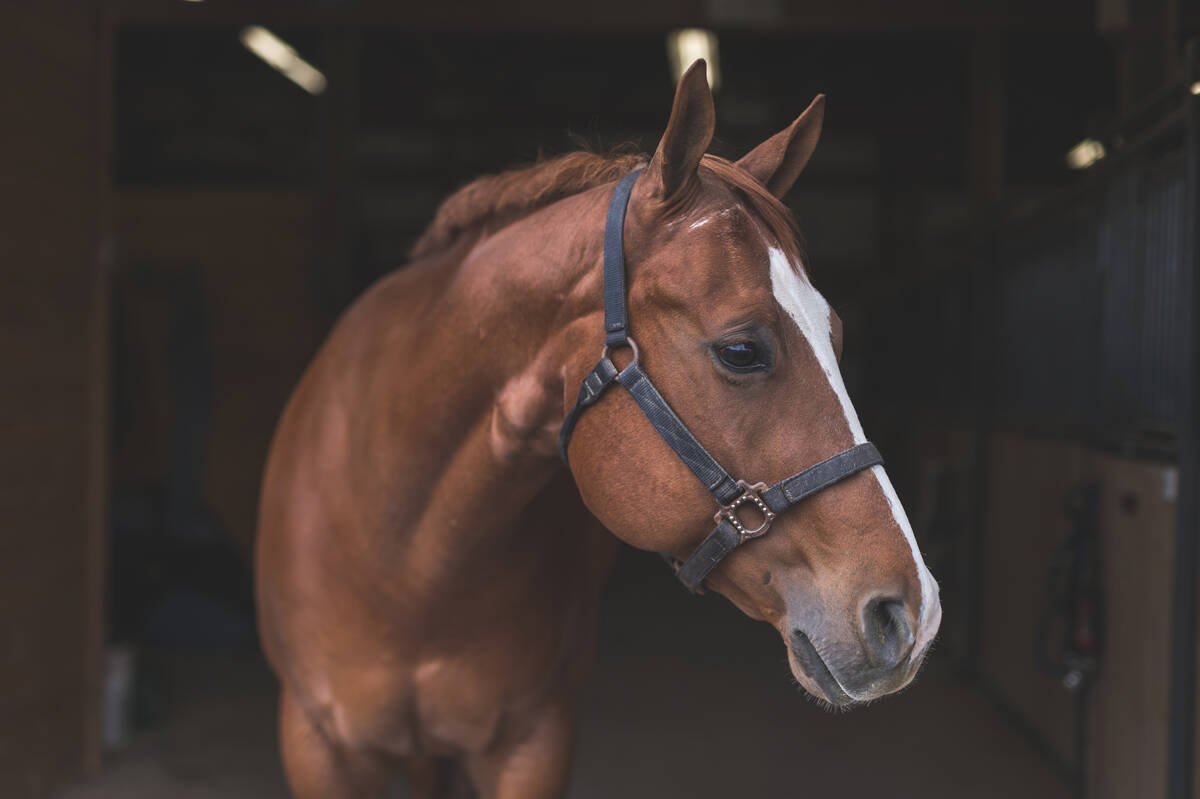Make sure breeding gilts aren’t too light, the barn isn’t too dim, and your management practices haven’t slipped
There’s a large variation in farrowing rate between farms, ranging from as low as 75 per cent to around 92 per cent. Many producers still view 85 per cent as being an acceptable target and figure it can’t be improved much further. But close attention to a range of management factors can often result in a five per cent improvement, usually at no cost.
Because the farrowing rate is influenced by many factors, it’s often difficult to know where to start. Reviewing management policy and implementation in key areas is the best approach.
Read Also

Canada’s slaughter horse industry lacks transparency
Horse slaughter is a fraught issue right now in the Canadian livestock sphere. The author writes that, while it has a role, traceability, transparency and humane handling must be in play.
First, look at the management of gilts and young females, which are most likely to exhibit poor farrowing rate if any aspect of their management is compromised. Start by checking on the weight of gilts at first breeding, which should be a minimum of 135 kilograms. Breeding gilts too light may lead to poor feed intake in first lactation, loss of body weight, and an extended wean-to-service interval, with a reduction in both farrowing rate and litter size.
I like to look at data for wean-to-service interval by parity, because this indicates if there is a problem with younger females. The best herds average under six days and perhaps one day more for first-litter weaned gilts. If the numbers are higher than these, that could indicate a problem with inadequate lactation feed intake.
Management between weaning and breeding can have a big influence on farrowing rate. Judging from some of the barns I visit, lighting is often an overlooked factor. Current recommendations regarding lighting intensity vary from 150 to 500 lux, and I would suggest 150 lux as a minimum. This can easily be measured with a cheap light meter.
Dirty fixtures, which reduce their output drastically, is a frequent problem, as is failure to replace broken bulbs or fluorescent strips. Generally, a 14- to 16-hour lighting period is recommended as extended day length is associated with a quicker return to estrus.
The second key area from weaning to breeding is feed and water. Feed intake should be as high as possible, bearing in mind that the sows’ appetite is reduced as she approaches estrus. Ideally, the lactation diet should continue to be fed as it is higher in energy and protein than a gestation diet.
For younger females, especially in high-performing herds, consideration should be given to using a high nutrient density top dressing from five days before weaning until they have been bred. This can be made up from high-protein sources such as fish meal or full-fat soybean meal combined with an energy source such as dextrose, with added vitamin E and monosodium phosphate.
Finally, correct boar exposure is a crucial factor in initiating a quick expression of estrus. Sows should be allowed to rest quietly for two days after weaning, with minimal disturbance by the stockperson and no boar presence. From the third day after weaning, boar exposure needs to be intense. That means using an active, smelly boar and allowing nose-to-nose contact with each sow twice per day. This is a job that should never be rushed as it is so critical.
Clearly, the process of breeding the sow is one of the most important in determining farrowing rate. But before reviewing management procedures, it’s worthwhile looking at where the drop-outs occur after breeding.
If the majority of them are regular returns, then improvements to breeding technique can boost farrowing rate. Sometimes I see herds with a low level of regular returns but a high level of drop-outs after 25 days, which may be due to some stress factor causing late, irregular returns or enforced culling due to foot and leg problems. If this is the case, those factors need to be investigated and corrected.
Assuming the majority of returns are regular, the next stage is to review the breeding process, starting with semen storage. Semen quality cannot be underestimated as an influence on conception rate. The key aspects of storage are temperature monitoring, resuspending sperm by rocking, rotating or inverting semen storage containers, good inventory control to ensure the oldest semen is used first, and checking the motility of each batch of semen prior to use.
It is well known that not only does the success of AI in terms of farrowing rate vary between operators, but that, over time, procedures tend to deteriorate. This means that a routine AI audit carried out by an AI specialist will almost always result in an improvement in farrowing rate.
My experience of carrying out this process suggests that there are three main areas where the procedure tends to slip. The first is the intensity of boar exposure because this directly influences the speed of uptake of semen by the sow and the degree of leakage. Boar contact, ideally with a different boar, should be maintained for about 10 minutes post-service, with the catheter remaining locked into the cervix, as this aids sperm transport up into the uterus.
The degree of stimulation of the sow by the stockperson also tends to slip over time. This should involve back pressure, gently rubbing the rear part of the udder and pulling on the flanks just in front of the hind leg.
Finally, hygiene procedures should be reviewed. The vulva should be cleaned thoroughly with a dry paper towel and care should be taken when inserting the tip of the catheter to avoid contamination.
Although many factors influence farrowing rate, identification of the most rewarding avenues for improvement through data analysis will identify the areas to review and improve. In today’s tough environment for producers, 90 per cent should be the target.














